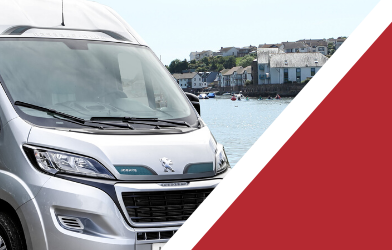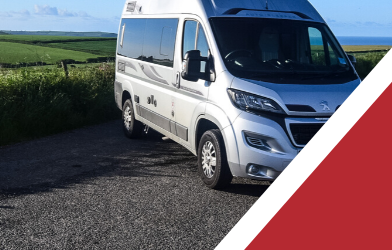The freedom of the open road – it’s what travelling in your motorhome is all about. And, once you venture into continental Europe, that open road is practically endless. Day after day, you can open your eyes to new vistas of the coastline, beaches, forests, lakes, or mountains wherever you had parked up just the night before.
Whether you are planning a late-season trip to Europe or thinking ahead to next year, however, a little advance planning and attention to what you need to take with you may save heartache – not to mention disaster – further down the road.
Your length of stay
If you are in the enviable position of being able to take an extended break, one of the critical considerations will be the way that immigration rules for visitors have changed post-Brexit. Whereas a stay of unlimited duration may have been possible in the past, since the 1st of January 2021 visitors from the UK to most of Europe are restricted to a stay of 90 days in every 180 days.
The rules are based on the borders of the so-called Schengen area within which there is freedom of travel. Following the UK’s departure from the EU, it is now regarded as a third country as far as the Schengen area is concerned. Hence, the 90-day rule of visits within every rolling 180 days. Within that 90-day period, you can visit as many countries within the Schengen area as you choose but the total must not exceed 90 days.
As you enter any country in the Schengen area, you will have your passport stamped and these can give you a handy way of calculating just how long you have been travelling and how much of your 90-day allowance is remaining.
In any event, a period of roughly three months is typically quite long enough for the majority of British motorhome owners touring the EU and Schengen area countries.
Passport
All this goes to show that you will need to have a valid and up-to-date passport when taking your motorhome to Europe.
More than that, the official European website advises that your passport must be valid “for at least a few months” after your proposed date of departure from the UK.
The required period of remaining validity is likely to be either three or six months, depending on the rules in the particular countries you will be entering. Check your passport before you leave the UK, therefore, and the passports of others travelling with you, and review the precise requirements of those countries you will be visiting – otherwise, you could find yourselves denied entry at a border checkpoint.
Driving licence
Brexit led to no changes in the freedom to drive throughout Europe on your current, up-to-date, photocard UK driving licence. If you still have an old-style paper licence or one issued in the Channel Islands, Isle of Man, or Gibraltar, however, you may be required to produce an International Driving Permit (IDP).
Although you will need to check the specific requirements of the countries concerned – because there are 3 different types of IDP in issue – it is easy enough to acquire an IDP. Probably easiest of all will be an application at the Post Office where you will need to show your current UK driving licence (together with your passport if yours is a paper licence), a passport-standard photograph, and the fee of £5.50.
Insurance
A minimum of third-party insurance is required to drive a motor vehicle in any European country. Fortunately, therefore, all motor insurance policies issued in the UK also extend third-party cover while driving in the EU. But you’ll need to keep that certificate with you at all times as proof of the legally required cover.
Beware, however, that even if your UK insurance policy is comprehensive or third-party, fire and theft, when you are driving abroad your cover may still be restricted to third-party cover only.
That is unlikely to be enough for any motorhome you are driving, so make sure to contact your insurers in advance of your holidays and arrange the appropriate cover you need for driving in the EU.
Green cards
In the summer of 2021, the European Commission waived a previous obligation for UK motorists to hold a green card as proof of the required thirty-party insurance.
If your touring takes you outside the area covered by this agreement (which covers the EU, Andorra, Bosnia and Herzegovina, Iceland, Liechtenstein, Norway, Serbia, and Switzerland) you might still need a green card – which you will need to request from your UK motor insurer.
Preparing your motorhome
It is not just a question of carrying the right documents when you are taking your motorhome to Europe. Different European countries have different rules about the equipment that must be carried within your motorhome – so check carefully what is required in the countries through which you will be driving.
Throughout Europe, for example, you must carry a warning triangle for use in roadside emergencies – and in Spain and Croatia, you need two.
For similar purposes, you must also have on board a reflective jacket while driving in Spain, Austria, France, Belgium, Portugal, and Croatia.
A first aid kit must also be carried when you are in France, Germany, Austria, Greece, and Croatia – although it is clearly a sensible precaution to have one onboard anyway.
A similarly wise precaution is to carry a fire extinguisher within your motorhome – and it is specifically recommended (although not obligatory) in Spain, Portugal, Switzerland, and the Netherlands.
France has finally abandoned legislation – which few French drivers complied with anyway – requiring motorists to carry a breathalyser kit.
Visit The RAC for more information.
Please note: This information is based on our current understanding of the law and may be liable to change. Please always make the necessary checks before you travel.




